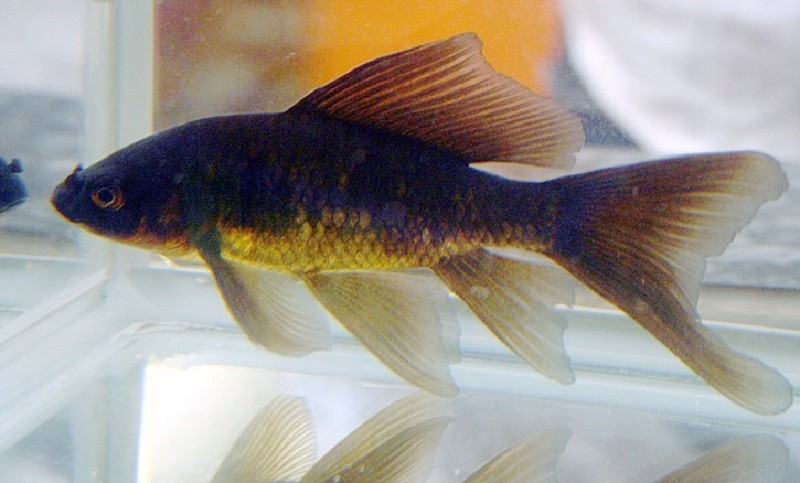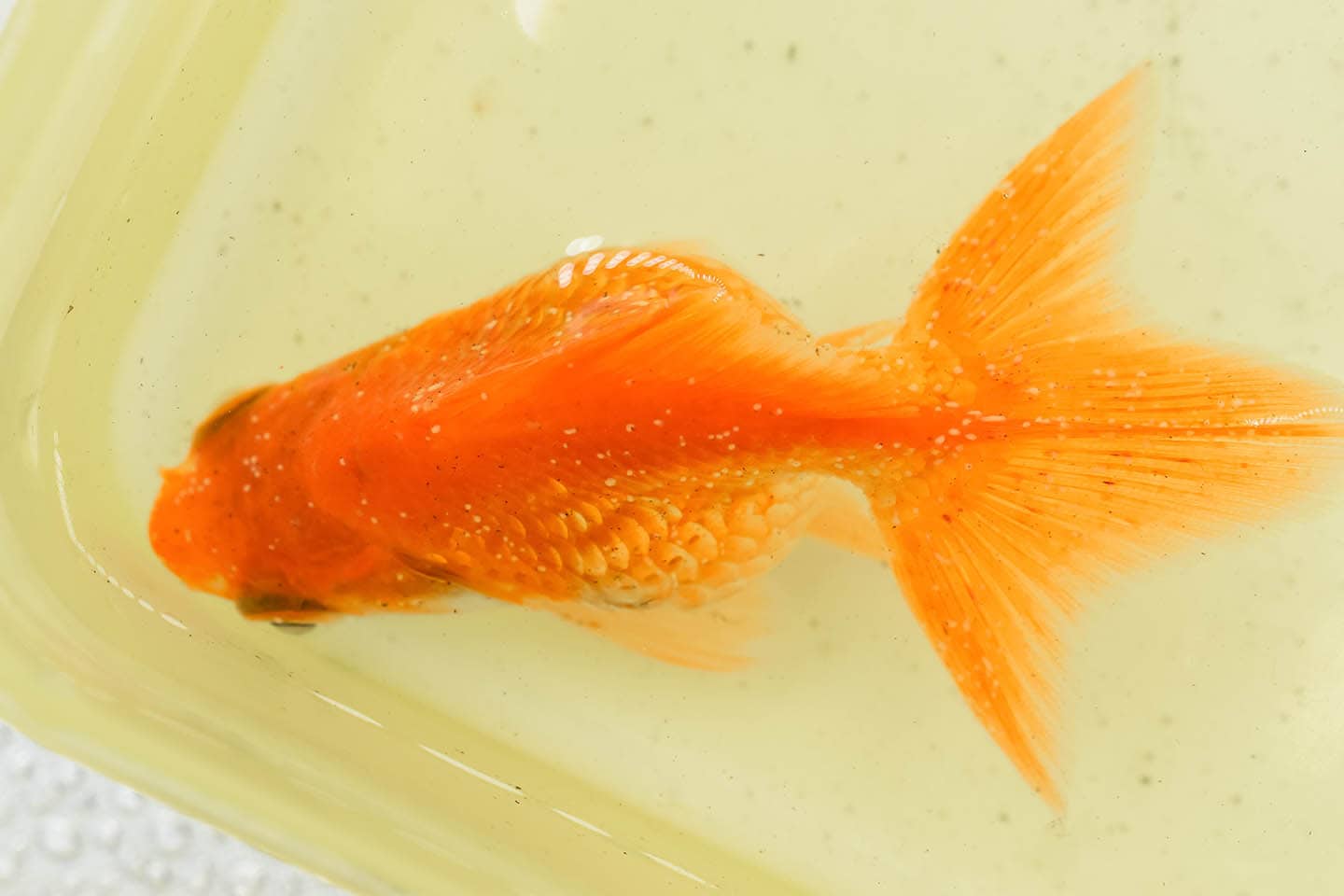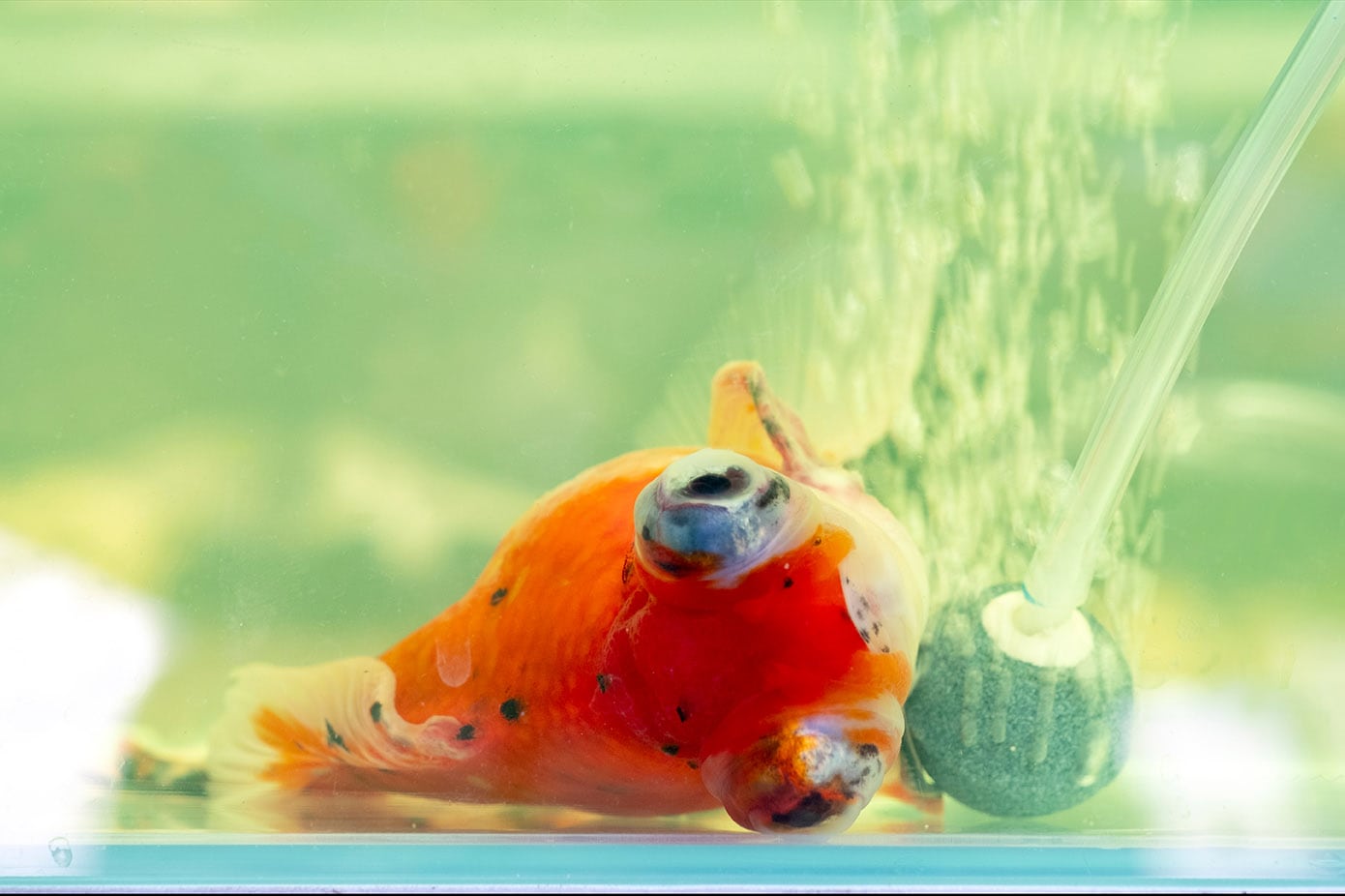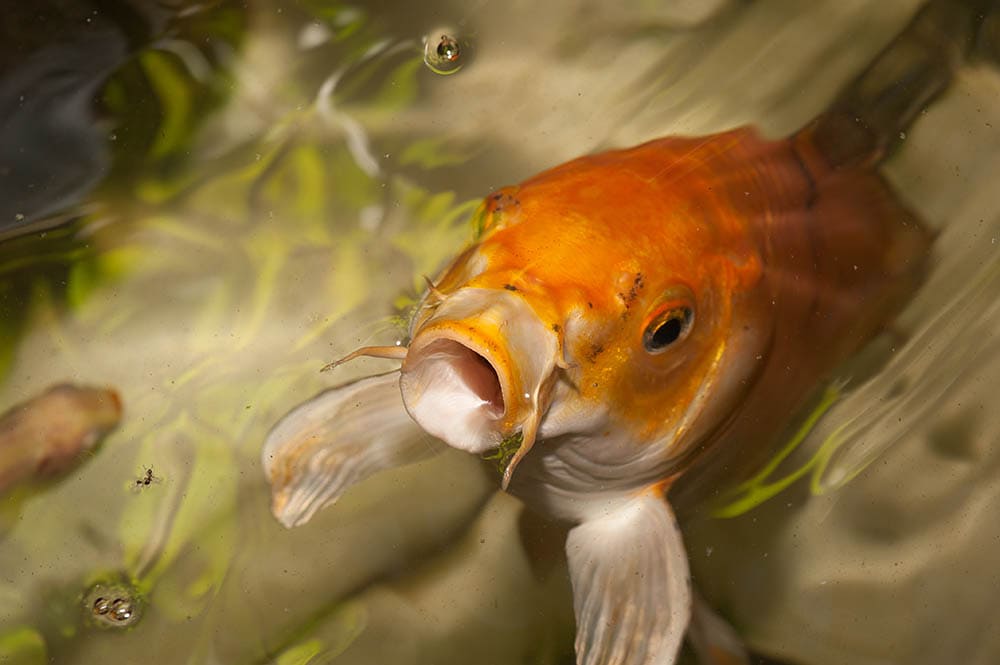
Goldfish tend to be extremely hardy fish, but this doesn’t mean they’re immune to getting sick. There are a few diseases that are common in goldfish that can be caused by poor water quality or exposure to disease via other fish, new plants, or water introduced to the tank from places like the pet store. The most common disease seen in goldfish is ich, which is easily recognizable from its noticeable, salt crystal-like appearance on scales and fins. If you’ve never dealt with ich before or you’re struggling to treat a particularly gnarly case of it, here’s what you need to know about ich and how to treat and prevent it.
What is Ich?
It might come as a surprise to you to hear that ich isn’t a bacterial or fungal infection but is actually a parasitic infection. The parasite that causes ich is known as Ichthyophthirius multifiliis, so it’s pretty obvious why the name is usually shortened. You may also see it referred to as ick, which is just a common misunderstanding of the name of the infection.
These tiny parasites attach to the scales and fins of fish, feeding off of them for nutrients that allow reproduction of more ich parasites. These parasites are what you’re seeing when you see those little salt crystals on your fish’s body. However, small, white crystals on goldfish aren’t always caused by ich. If you notice these crystals are concentrated in the area of the gills and the front of the pectoral, or front, fins, then it’s likely that your goldfish is a male that is ready to breed. This is even more likely if you have more than one goldfish of breeding age. These white specks that appear on male goldfish are called “breeding stars”, and they assist the male in stimulating the female to release eggs for spawning.
Signs of Ich
If you are unsure if what you’re seeing is ich or breeding stars, there are other signs that you can watch for that indicate the presence of ich. Ich causes skin irritation and itching, which is likely to lead to your goldfish darting around the tank quickly and rubbing against tank items. This behavior is called “flashing” and is a common sign, with many infections involving the scales, skin, or fins. Fin clamping is another common sign with ich and involves the dorsal fin being clamped down against the body. Sometimes, fish will clamp the dorsal fin down during certain activities or swimming patterns, and this is perfectly normal, but if you notice your fish is clamping its dorsal fin all the time, then this is indicative of stress and illness. You may also notice lethargy, less social interaction, and a somewhat decreased interest in food.
When ich first starts off, it may seem innocuous, but ich parasites will reproduce readily and have short life cycles that allow for quick reproduction. Over time, ich will spread to other fish in the tank and will continue to reproduce on the “patient zero” fish as well. These parasites can take a serious toll on the health and wellbeing of your goldfish, and they will eventually cause death, so treating and preventing ich should be top priority. Ich parasites leave egg packets that drop to the bottom of the tank and release more parasites, which are then free-swimming in the tank, allowing them to infect other fish.

How Can I Treat Ich?
Ich-X
Ich-X medication is a non-prescription ich treatment that is used to treat the entire tank. This medication is marketed as safe for invertebrates, like snails, scaleless fish, like loaches, and plants. It’s available in a large jug for treating ponds.
MinnFinn
MinnFinn is a great ich treatment option if you’re hoping to find something natural. This remedy is on the expensive side and a better option for large tanks and ponds than it is for small tanks.
If your fish isn't behaving or looking as it normally does and you suspect it may be sick, ensure you provide the right treatment, by checking out the best-selling and comprehensive book The Truth About Goldfish on Amazon today.
It has entire chapters dedicated to in-depth diagnoses, treatment options, a treatment index, and a list of everything in our fishkeeping medicine cabinet, natural and commercial (and more!).
Heat
Heat isn’t technically a treatment for ich, but it is extremely effective for removing ich because it speeds the life cycle up significantly. To use heat as an ich treatment, you should slowly turn the temperature up in the tank by a couple of degrees daily, not exceeding 80°F (26.7 °C). During this treatment, you should perform daily cleaning with a gravel vac to pick up newly dropped egg packets before they have a chance to hatch. This prevents more parasites from infecting your fish and within days, the parasites present on your fish will begin to die.
Aquarium Salt
Potentially the most effective, but one of the highest risk treatment options, aquarium salt is a widely available treatment option. Aquarium salt cannot be used in tanks with invertebrates, scaleless fish, or plants, which means you will have to remove these animals and plants before treatment. Aquarium salt is most effective when combined with heat. Here’s how you can use aquarium salt:
Custom Filters
Attach a custom filter with a mesh size of 80 microns. This will trap the tomonts (the developmental stage of the parasite when they’re not attached to the fish) and not enable them to re-enter your aquarium.

What Are Some Potential Ich Treatments?
Catappa/Indian Almond Leaves
These leaves are available in most pet stores and release tannins into water, which causes tea-colored water. Studies have shown promise in Catappa leaves successfully treating bacterial, fungal, and parasitic infections in aquariums. Allow the leaves to stay in the tank for 10-14 days, performing daily gravel vacuuming. These leaves can, in large enough quantities, lower the pH of your tank, so if you choose this method of treatment, make sure to check the pH level at least once daily.
Malachite Green
Although effective, this product is a potential carcinogen, so it has largely fallen out of favor among fish keepers.
Copper-Sulfate, Methylene Blue, and Potassium Permanganate
While effective, these products tend to have high environmental impacts, making their use somewhat controversial.
UV Lighting
UV lighting is known to successfully kill ich, but there’s a catch. UV lighting can only kill ich while it is free-swimming, so it won’t do anything for the current infection that your fish has. When used in conjunction with other treatments, or when the infection is caught early enough, the use of a UV light may fully clear up your ich problem. These lights come in multiple forms for aquarium use, including in-tank UV lights, UV lights built into the canister of a canister or HOB filter, and in-line UV lights that allow water that has left the tank for a canister filter or sump system to pass through the light. UV lights offer the added benefits of killing other free-swimming parasites, bacteria, and free-floating algae.

How Can I Prevent Ich?
There are steps that you can take to decrease the likelihood of an infestation. When you bring a new fish home, quarantine it for 6–8 weeks or longer in a separate tank from the main tank. This step is vital, as ich is a parasite that needs a host to survive; it cannot enter your tank unless it takes a ride on a newcoming fish. This quarantine will give you plenty of time to monitor for the onset of signs of many diseases and infestations, including ich. If your new fish is sick, you’ll only have to treat the quarantine tank and not your entire main tank.
If you decide to forgo quarantine (a decision that is not recommended), make sure you do not combine the water that your fish came in into the tank. Pouring water from the pet or aquarium store directly into the tank can introduce parasites that haven’t found a host yet. The same goes for any water that comes with plants and décor for your tank. It’s good practice to quarantine or bleach dip plants before adding them to your tank.
Ich thrives in poor water conditions, so maintaining water quality is key to preventing ich. This is especially true if your water is cloudy or you don’t perform water changes on a regular basis, because it’s more difficult to spot the presence of ich on your fish. Ich is common in ponds and overstocked tanks, so make sure you don’t neglect these environments. Routinely check water parameters and make any adjustments needed to maintain the water quality. Perform water changes and carefully inspect your fish on a regular basis for any signs or symptoms of illness.
See Also:
- Can Goldfish Eat Bread? Fact vs. Fiction & What You Need To Know!
- Goldfish Fungus Diseases: Symptoms, Treatment & Prevention Guide
- How Long Can a Goldfish Go Without Eating? What You Need To Know!
Final Thoughts
Treating ich can be a major inconvenience and can threaten the lives of the fish in your tank. Prevention is your best weapon against ich parasites, but sometimes, these infections are unavoidable. If you do end up with ich in your tank, don’t beat yourself up! It happens to even the most experienced fish keepers, so all you can do is take precautions and hope for the best. If you notice ich on your fish, immediately begin treatment. Catching and treating ich as early as possible will give your fish the best chance at survival.
Featured Image Credit: Andrii Oleksiienko, Shutterstock









